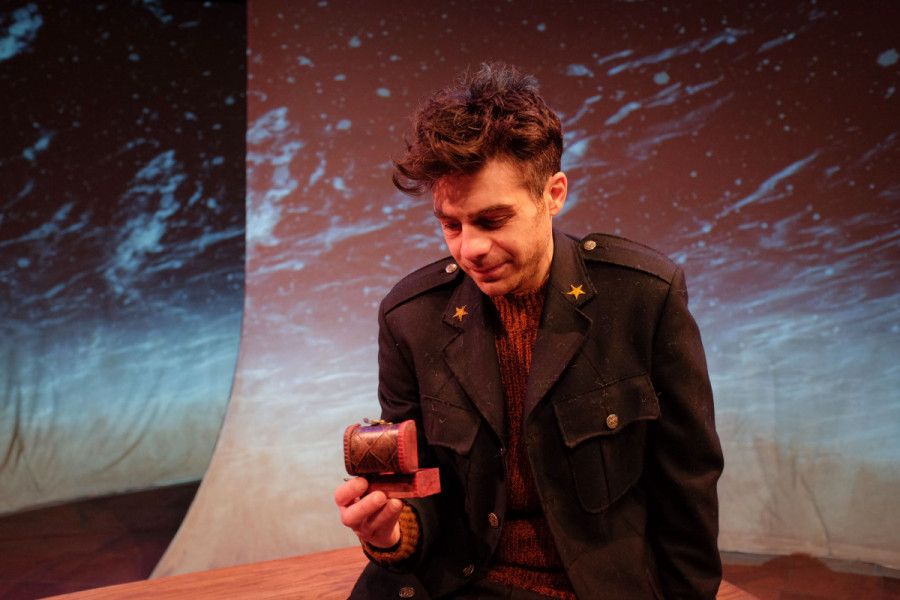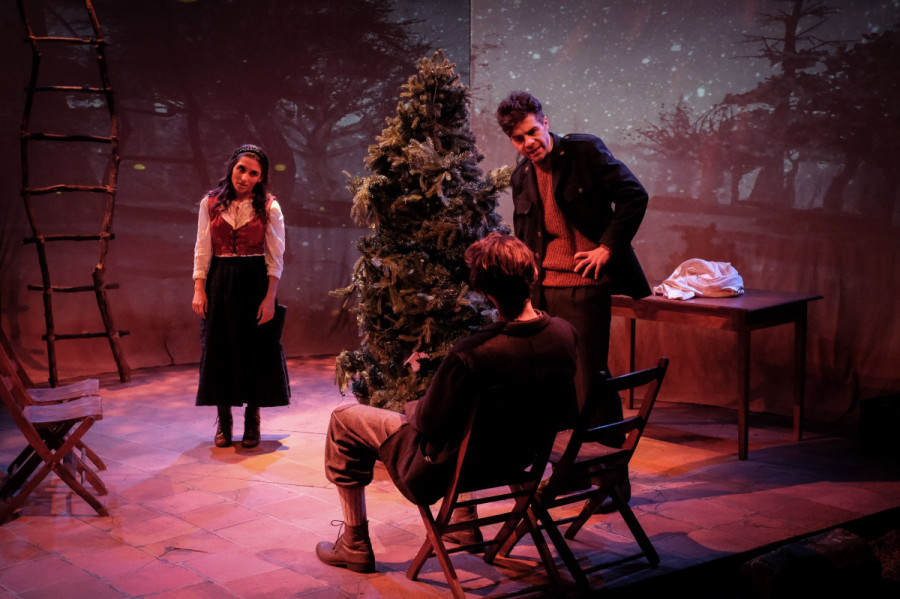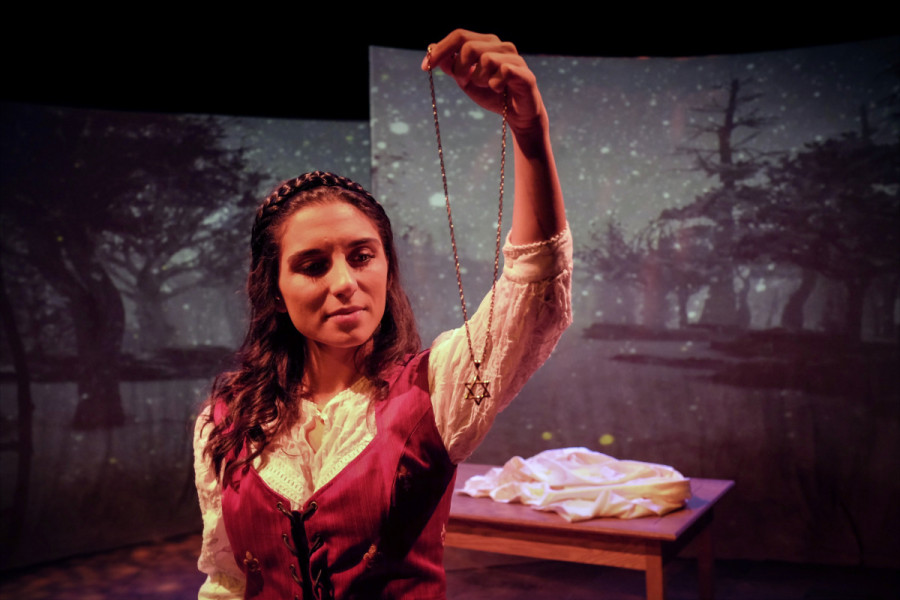‘Winter’s Daughter’ Retells Family History in Poignant Play
Love, Life, and Family Come Alive
What do you do when you have close to nothing, and lose everything? The play Winter’s Daughter answers: you keep fighting, and play the cards you are dealt.
Between Nov. 28 and Dec. 8, the Segal Center played the emotional and humbling Winter’s Daughter. Written by Jesse Strong and directed by Emma Tribaldo, the play tells the story of a family humbled by the casualties of life.
Based on a true story, Maria and Giussepe confront the death of their daughter, and their peculiar choice to secretly adopt the young Jewish girl left in their care, and raise her as their own.
In the mid 1920s, in a small town in the south of Italy, the couple sat at their hardwood kitchen table. Behind them, a landscape of a stretched-out land, swaying trees, and falling snow. The wind howled in a haunting cadence.
The world of Giussepe and Maria is bright, lively, and, at first, ordinary. Their banter is casual, humorous, and blended with the realistic clashes one might expect to unravel in a young family.

The enigmatic Maria, played by Michaela Di Cesare, is a joy to watch on stage. Her character is strong; she is funny, yet commanding, and very much the woman of the household, nagging Giussepe about work. Maria rides the waves of life, and Di Cesare displayed dexterity in the way she surfs emotions with elegance.
Raising their daughter Rosie is a challenge in and of itself. When their neighbor, a peddler, leaves his daughter, Rina, to stay at the farm while he travels to Naples in search of financial stability, the story truly begins.
The drama comes to a crux when Rosie is found dead a mid-winter accident. Struck by grief, the narrative turned dark; dimly lit scenes of a grief-struck Maria portrayed the isolation of grief with poetic accuracy, and the loss hits Giuseppe as he spirals into a depression of his own.
As the seasons change, the peddler has not returned, the couple begin to treat Rina as their own. The girl, with long ringlets of dark brown hair, even looks like Rosie, they agree on stage. Struck by grief and imbued with the confusion of strange emotion, Maria and Giussepe begin to latch on to the girl.
Working in the fields, Giussepe finds a necklace in the garden, buried by the peddler before he left for his travels. On it is a gold Star of David, and Giussepe realizes that Rina is, in fact, Jewish, a secret they kept hidden to their friends and neighbors.

Dim lighting evoked a sense of intimacy within the small family farm, while projections of the landscape brought the set to life. Slipping through different seasons, Jaclyn Turner’s projected landscape changed from the snowy winter to a green spring, illustrating the passage of time.
Using modern technology as a narrative device in a century-old story is an inventive allusion to the living history behind the play. Winter’s Daughter is based off of the book The Peddler’s Daughter, by K. David Brody, which itself is based off of the true story of local Montreal resident Gino Chiarella, whose grandfather confided in him that his grandmother as an adopted Jew.
Moments of grief often took over the entire narrative, but this is what grief does; it captivates, taking hold and keeping dense moments carved into our memories and etched into the patchwork of our lives.
Keeping our hearts beating strong in moments where faith feels nil, Winter’s Daughter is a reminder to hold onto family, and watch as love emerges from catastrophe, weaving new stories into the blueprint of our lives.


_600_832_s.png)
